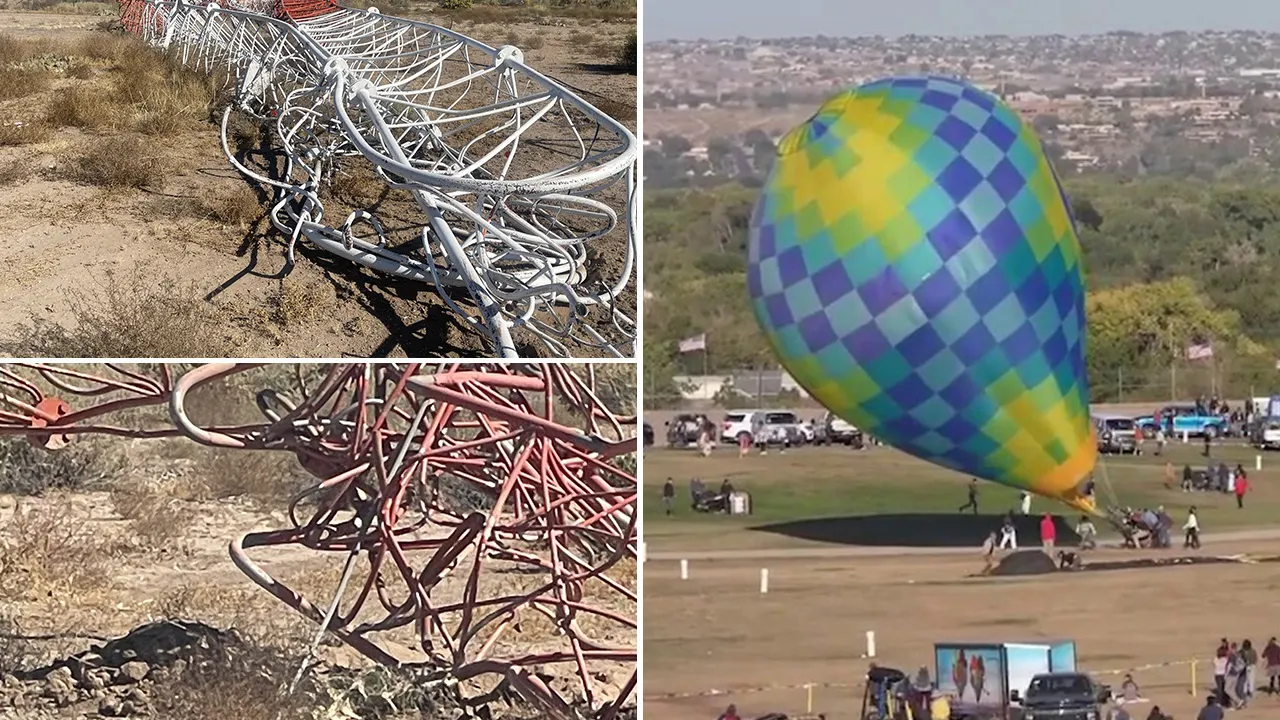The Albuquerque International Balloon Fiesta, a renowned week-long event attracting thousands, experienced a concerning incident on Friday morning. A hot air balloon participating in the 52nd annual fiesta struck a radio tower, resulting in a brief fire and the collapse of the tower. Fortunately, the three individuals on board the balloon escaped without injury. This incident, however, highlights the inherent risks involved in hot air ballooning, particularly during large-scale events, and raises questions about safety protocols and potential preventative measures. The event, though marred by this accident, continued, culminating on Sunday with another minor incident involving a balloon and power lines. These events underscore the importance of ongoing safety improvements and careful planning for future balloon fiestas. This detailed analysis will delve deeper into the incident, exploring the specifics, safety implications and preventative measures.
The Albuquerque Balloon Fiesta Incident: A Detailed Account
The Crash and its Aftermath
On Friday, October 7th, 2023, during the 52nd annual Albuquerque International Balloon Fiesta, a hot air balloon collided with a radio tower owned by KKOB-AM. The impact caused the tower to immediately crumble, resulting in damage to both the tower and the balloon. Video footage captured the moment of impact vividly showcasing the sudden collapse of the structure. Fortunately, despite the dramatic nature of the crash, the three passengers aboard the balloon, along with any ground personnel, escaped unharmed. The Bernalillo County Sheriff’s Office responded swiftly to secure the area and assess the damage. Pictures from the incident show significant damage to the radio tower, which illustrates the force of the impact and underscores the need for enhanced safety considerations. The rapid response of emergency services and the fortunate absence of injuries underscore the preparedness involved in managing such a high-profile event.
Investigating the Cause of the Accident
While specific details regarding the cause of the accident remain under investigation, several factors are likely to be explored. These include potential issues with wind conditions, pilot navigation, or the positioning of the radio tower relative to designated flight paths. The experience level of the pilot will also be evaluated as a potential contributing factor. Thorough investigations into the weather patterns prevailing during the time of the accident, the air traffic control communications and procedures followed by both the balloon operator and the air traffic control personnel would help to understand the accident more fully. Post accident investigation is crucial in this instance to preventing recurrence of this incident. This meticulous examination of contributing factors, including pre-flight checks and adherence to established flight safety regulations, is vital in determining the root cause of the incident.
Safety Concerns and Previous Incidents
Historical Precedents
This was not the first incident involving hot air balloons and the KKOB radio tower. A similar event occurred in 2004 involving the Smokey Bear Balloon. In that incident, the balloon became entangled on the tower, resulting in a precarious situation for the pilot and passengers before being rescued. The earlier accident serves as a sobering reminder of the risks involved, highlighting the need for continuous improvement in safety measures and protocols for future balloon events. This history necessitates a rigorous review of current safety guidelines and infrastructure design to minimize such events going forward. The pattern of incidents involving this particular tower underlines a systemic safety concern that deserves greater scrutiny.
Addressing Future Risks
In light of the recent incident and the 2004 accident, there’s an urgent need for a comprehensive reassessment of the safety protocols governing hot air balloon events at the Albuquerque International Balloon Fiesta. Measures such as stricter flight path restrictions, enhanced communication systems between pilots and air traffic controllers, and a more detailed risk assessment incorporating the presence of fixed obstacles near flight zones, like the radio tower, must be urgently undertaken. Further, advanced navigational tools and training modules can mitigate these hazards. Regular maintenance and monitoring of essential infrastructure to ensure optimal working order are equally significant. The investigation into this latest incident should include a thorough examination of all safety protocols used during the event to identify potential weaknesses and improve future safety measures.
The Wider Context: Balloon Fiesta and Safety
Balancing spectacle and safety
The Albuquerque International Balloon Fiesta is a major tourism event drawing large crowds. This popularity inevitably creates complex challenges in managing flight safety whilst maintaining the aesthetic allure of the event. The spectacle involves many participants from different backgrounds with varying degrees of experience. Ensuring the wellbeing of each individual remains crucial. Therefore, a holistic evaluation encompassing diverse experience levels, advanced technologies, and communication effectiveness will create safer future balloon fiestas. This delicate balance between vibrant aerial displays and ensuring public safety needs carefully developed protocols.
The Importance of Regulations and Pilot Training
Stricter regulations governing flight paths, pilot certification, and pre-flight checks are pivotal for preventing similar occurrences. Mandatory training on advanced risk management techniques and navigation procedures are also essential. Continuous investment in up-to-date technology, for instance weather-monitoring equipment, real-time GPS trackers, and advanced communication systems should support these actions. These will help manage and react to unpredictable conditions on the field. Furthermore, stricter enforcement of safety procedures, combined with comprehensive pilot training that takes account of unexpected incidents, would certainly reduce risk levels. A continuous review and update of these measures will support enhanced safety, creating more secure conditions.
Take Away Points
- The Albuquerque International Balloon Fiesta 2023 witnessed a concerning incident where a hot air balloon crashed into a radio tower.
- Fortunately, there were no reported injuries in this incident or a subsequent minor incident.
- The incident highlighted inherent risks in hot air ballooning and emphasizes the need for improved safety measures.
- A thorough investigation is crucial to determine the cause of the accident and inform improvements for future events.
- Ongoing review of safety protocols, pilot training, and infrastructure management are vital for preventing similar accidents. Enhanced communication systems, stricter flight path adherence, and incorporation of advanced risk assessment strategies for future balloon fiestas should be priorities.




